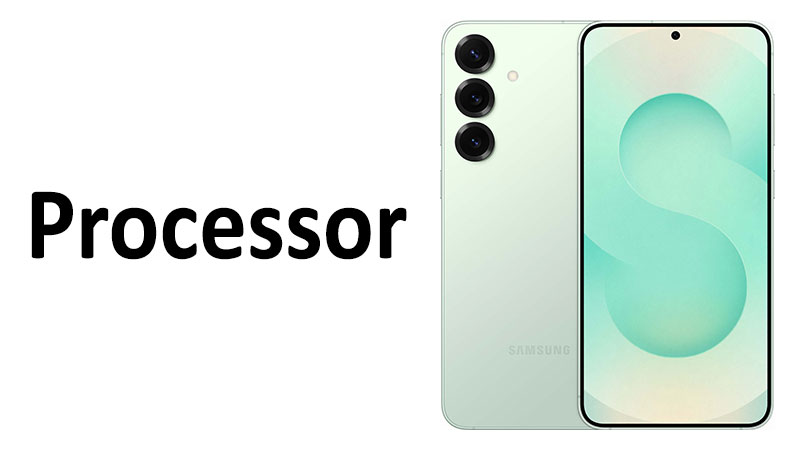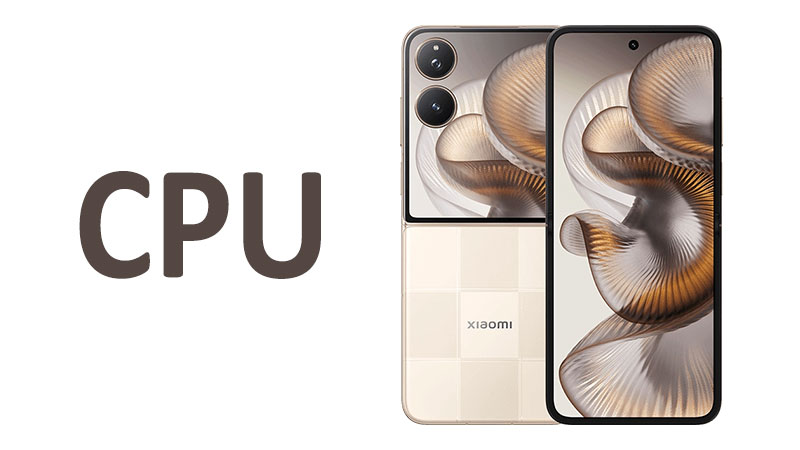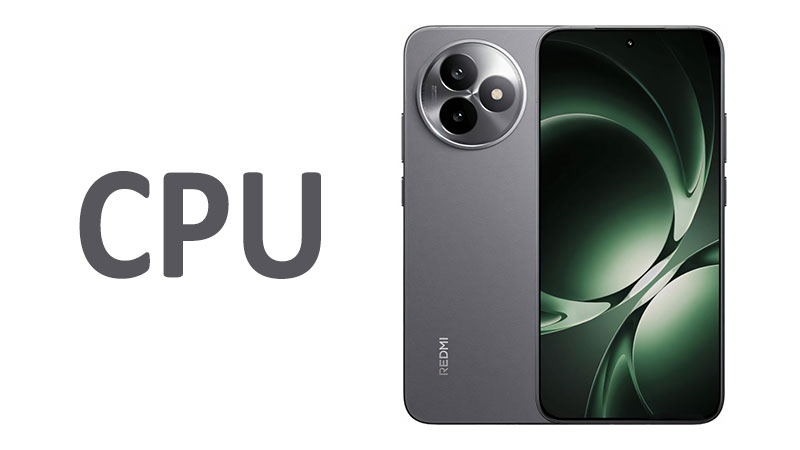The Samsung Galaxy S25 Plus processor is the defining feature of this year’s flagship smartphone. It dictates everything from app speed to gaming performance and battery life. This comprehensive review examines the specific chipset, CPU, and GPU components powering the Galaxy S25 Plus. We explore the technical specifications and analyze their real-world impact. Understanding the core silicon is essential for any potential buyer. The performance of the Samsung Galaxy S25 Plus processor sets a new industry benchmark.
The Heart of the Beast: Chipset Architecture and Fabrication
The Samsung Galaxy S25 Plus features the most advanced mobile processor available. It utilizes the powerful Qualcomm SM8750-AC Snapdragon 8 Elite. This customized chipset is the engine for all functions. It ensures an extremely smooth and responsive user experience. The ‘AC’ designation signals a dedicated, optimized variant. This variant is specifically tailored for Samsung’s flagship line.
Introducing the Snapdragon 8 Elite (SM8750-AC)
Qualcomm designs the Snapdragon 8 Elite for the absolute peak of mobile performance. This chipset incorporates the most recent advancements in semiconductor technology. It manages all complex tasks effortlessly. These tasks include AI processing, graphics rendering, and basic app functions. The Elite branding confirms its superior clock speeds and thermal tuning. This makes it ideal for the larger chassis of the Galaxy S25 Plus. The overall performance relies heavily on this core architecture.
The Crucial 3-Nanometer Advantage
The SM8750-AC is manufactured using a cutting-edge 3-nanometer (3nm) process. This represents a major generational leap in semiconductor fabrication. Transistors at this size are incredibly dense and energy-efficient. Packing more transistors into the same area increases computing power. Furthermore, the 3nm architecture requires less voltage to operate. This translates directly to reduced power consumption. This efficiency is critical for maintaining long battery life. It also allows the chip to run cooler during intense activity.
The Impact on Power Efficiency
The leap to 3nm offers a significant gain in efficiency per watt. This means the S25 Plus can perform more calculations using less energy. The thermal footprint of the chip is also inherently smaller. This makes it easier for the phone’s cooling system to manage heat. Better efficiency and lower heat allow for higher sustained performance. Users benefit from quicker load times and cooler operation. This 3nm advantage is a core strength of the Samsung Galaxy S25 Plus processor.
Specialized Comparison: S25 Plus vs. S24 Plus Chipset
The Galaxy S24 Plus used the previous generation’s 4nm chipset. The move to the 3nm Snapdragon 8 Elite provides distinct advantages. The S25 Plus offers superior performance and power efficiency. Benchmarks show double-digit percentage gains in both CPU and GPU performance. More importantly, the S25 Plus maintains its peak speed for longer periods. This is due to the smaller manufacturing node and better thermal properties. Users upgrading will notice improved battery endurance under heavy load. The technological jump is significant in the context of mobile silicon.
Central Processing Unit (CPU) Performance Breakdown
The CPU architecture determines the raw computational speed of the S25 Plus. The processor uses a sophisticated Octa-core design. This design strategically allocates tasks across different cores. This ensures maximum efficiency for every scenario, from idle states to extreme multitasking.
The Octa-Core Philosophy
The Octa-core CPU divides its eight processing units into clusters. This division creates a balanced system. Simple background tasks use the most efficient cores. Complex applications activate the high-power performance cores. This dynamic switching prevents unnecessary power drain. It also guarantees sufficient power is always available when needed. This approach defines the modern mobile processor architecture.
Oryon V2 Phoenix L Cores: The Powerhouses (2×4.47 GHz)
The Samsung Galaxy S25 Plus processor includes two ultra-high-speed cores. These are named the Oryon V2 Phoenix L cores. The ‘L’ stands for large, indicating their primary role as performance drivers. They are clocked at an impressive maximum frequency of 4.47 GHz. These cores handle all single-threaded, performance-critical tasks. Examples include app launch speeds and complex calculation processing. Their high speed ensures instantaneous responsiveness. This raw power is crucial for a smooth user interface.
Oryon V2 Phoenix M Cores: The Efficiency Engine (6×3.53 GHz)
The remaining six cores are the Oryon V2 Phoenix M cores. These cores prioritize power efficiency over raw, absolute speed. They run at a high but managed frequency of 3.53 GHz. This cluster handles sustained and parallel tasks. These include background synchronization, general navigation, and light browsing. Their six-core configuration provides strong multi-threaded performance. At the same time, they draw minimal power. This large efficiency cluster is the key to the phone’s excellent daily battery life.
Single-Threaded Speed and Application Responsiveness
The 4.47 GHz frequency of the L cores yields exceptional single-core performance. Single-core speed directly affects how fluid the phone feels in everyday use. Apps open instantly, and scrolling is incredibly smooth. This high frequency gives the Galaxy S25 Plus a competitive edge in responsiveness. It ensures that the phone never feels sluggish, even when juggling many apps. The speed makes the user experience seamless and intuitive.
Multi-Tasking and Parallel Processing
The entire Octa-core array works together for heavy multitasking. The eight cores simultaneously handle multiple applications and background processes. This parallel processing capability speeds up tasks like video export and data compression. The six efficiency cores prevent the two main powerhouses from becoming overloaded. The coordinated effort maximizes throughput and minimizes waiting times. The Samsung Galaxy S25 specs reflect a balanced design philosophy.
Graphics Dominance: Adreno 830 GPU
The Graphics Processing Unit (GPU) is responsible for all visual data. It handles everything from the user interface to demanding 3D games. The Samsung Galaxy S25 Plus processor integrates the powerful Adreno 830. This GPU is a significant upgrade, focusing on both speed and advanced rendering features.
Adreno 830: Next-Generation Graphics Architecture
The Adreno 830 is built on a completely new microarchitecture. This design improves instruction processing and memory access. The new architecture provides significant performance gains over the previous Adreno generation. It manages complex geometry and shading with improved efficiency. This translates into higher frame rates and richer graphical detail in games. The dedicated graphics power enhances the overall multimedia experience.
Maximum Clock Speed and Rendering Power (1200 MHz)
The Adreno 830 is clocked at a peak frequency of 1200 MHz. This is a very high speed for a mobile GPU. This frequency allows the chip to render high-resolution visuals quickly. It ensures the large, vibrant display of the Galaxy S25 Plus performs at its best. High frame rates are essential for competitive mobile gaming. The 1200 MHz clock speed confirms the GPU’s flagship status. It provides consistent and powerful graphics delivery.
Deep Dive into Ray Tracing Capabilities
The Adreno 830 significantly advances hardware-accelerated ray tracing. Ray tracing simulates the physical behavior of light. This creates highly realistic shadows, reflections, and illumination effects. The S25 Plus brings console-level graphics fidelity to a mobile platform. Games supporting ray tracing will look remarkably more detailed and lifelike. This feature is a major selling point for graphic enthusiasts. It demonstrates the future-proofing of the Samsung Galaxy S25 Plus processor.
Variable Rate Shading (VRS) for Efficiency
The GPU also supports advanced Variable Rate Shading (VRS). VRS is a smart rendering technology. It conserves power and boosts frame rates by prioritizing visual quality. It renders central or focused objects in high detail. Conversely, it reduces the shading rate in less important areas, like peripheral vision. This optimization is crucial for maintaining performance during long gaming sessions. It keeps the frame rate stable without increasing thermal output. VRS is a smart way to manage the vast power of the Adreno 830.
Comparison: Adreno 830 vs. Competitor Mobile GPUs
The Adreno 830 is positioned directly against Apple’s latest A-series GPUs. The S25 Plus often matches or surpasses the competition in raw graphics benchmarks. Furthermore, the Android ecosystem benefits from the Adreno family’s strong developer support. This means more games are optimized to utilize its features fully. The combination of high clock speed, VRS, and advanced ray tracing makes the Adreno 830 a top-tier mobile GPU. It solidifies the S25 Plus’s status as a gaming powerhouse.
Efficiency, Thermals, and Sustained Performance
A powerful processor requires a robust cooling system. The larger size of the Samsung Galaxy S25 Plus chassis provides an advantage here. It allows for a more effective and extensive thermal management solution. This is key to maintaining Samsung Galaxy S25 Plus performance.
The S25 Plus Thermal Management System
The Galaxy S25 Plus utilizes a specialized cooling solution. This system typically includes an enlarged vapor chamber and thermal materials. The vapor chamber is larger in the Plus model than in the standard S25. A larger chamber absorbs and dissipates heat more effectively. This allows the Snapdragon 8 Elite to run at peak speeds for longer. Better cooling directly translates to less thermal throttling. This is a critical factor for competitive gaming and video recording.
Sustained Performance and Throttling Control
The ability to sustain high performance separates flagship phones from mid-range ones. The S25 Plus excels in this area thanks to its effective cooling. The 3nm efficiency of the processor minimizes the heat generated. The large cooling system then efficiently removes the remaining heat. This tandem approach ensures the S25 Plus maintains high frame rates and quick response times. It avoids the annoying performance drops seen in less optimized devices. This consistency is a major benefit for power users.
Role of the NPU in AI and System Optimization
The Snapdragon 8 Elite includes a powerful, dedicated Neural Processing Unit (NPU). This unit handles all Artificial Intelligence and Machine Learning tasks. It significantly accelerates complex computations like image recognition. The NPU also powers advanced features like on-device generative AI. This specialized silicon reduces the burden on the main CPU and GPU. This offloading improves the overall system efficiency and speed. The advanced NPU is crucial for the phone’s next-generation smart features.
Power Consumption and Battery Life Synergy
The high efficiency of the 3nm architecture benefits the battery greatly. Even with the powerful 4.47 GHz cores, power consumption is managed precisely. The NPU and the six efficiency cores handle most tasks with minimal draw. This optimized use of energy extends the battery life of the S25 Plus. The processor works in perfect harmony with the phone’s battery cell. The result is a device that provides exceptional endurance alongside its speed.
Real-World Impact and Buyer Considerations
The technical specifications of the Samsung Galaxy S25 Plus processor translate into tangible user benefits. These impacts are most evident in high-demand scenarios. Understanding these scenarios helps buyers evaluate the phone’s value.
Gaming Experience on the Galaxy S25 Plus
The S25 Plus is a true mobile gaming champion. The combination of the powerful CPU and the Adreno 830 GPU is formidable. Games run at maximum settings with high and stable frame rates. Ray tracing support adds a new dimension of visual realism to supported titles. The effective thermal management prevents the phone from overheating during extended play. This ensures a comfortable and competitive gaming session. The S25 Plus provides an unparalleled gaming experience in the Android market.
Photography and Computational Demands
Modern photography is highly reliant on processor power. The S25 Plus uses the Snapdragon 8 Elite for computational photography. This involves complex algorithms for image stacking, noise reduction, and portrait mode effects. The incredibly fast CPU and NPU execute these computations instantly. Users can capture professional-grade photos with zero shutter lag. The processor also handles 8K video recording and high-bitrate video editing effortlessly. It is a critical component for mobile photographers and videographers.
Video Streaming and Multimedia
The Adreno 830 and the powerful CPU cores ensure flawless media consumption. High-resolution streaming and complex video decoding are handled smoothly. The efficiency of the 3nm chip means watching hours of content uses less battery power. The processor easily powers the high refresh rate display. This results in incredibly smooth and tear-free video playback. The S25 Plus delivers a premium multimedia viewing experience.
Important Considerations: Elite vs. Exynos Variants
Potential buyers must pay attention to the specific chipset in their region. Samsung historically uses its own Exynos chips in some global markets. The Qualcomm Snapdragon 8 Elite (SM8750-AC) is generally preferred for its superior GPU performance and thermal stability. While the Exynos variant is often comparable, the Elite version provides a more consistent, world-class experience. Checking the local product specifications is a vital step for any informed purchase.
Pros and Cons of the S25 Plus Processor
The Snapdragon 8 Elite is a remarkable piece of engineering. However, buyers should be aware of the trade-offs involved in its design and implementation.
Advantages of the 3nm Snapdragon Elite
- Top-Tier Efficiency: The 3nm process provides industry-leading performance per watt. This directly extends the battery life of the S25 Plus.
- Unmatched Responsiveness: The two 4.47 GHz performance cores ensure near-instantaneous app launching and system navigation.
- Advanced Gaming Features: The Adreno 830’s ray tracing capability pushes mobile graphics to a new level of realism.
- Superior Sustained Power: The larger chassis and effective cooling minimize thermal throttling. This maintains high speed under prolonged pressure.
- Integrated AI Powerhouse: The dedicated NPU accelerates smart features. This includes camera processing and on-device machine learning tasks.
Disadvantages and Trade-Offs
- Premium Component Cost: Using the latest 3nm technology contributes to the high retail price of the Galaxy S25 Plus.
- Clock Speed Limitations: Although extremely fast, the core clock speed is deliberately managed to prevent excessive heat. This is a controlled limit.
- Regional Chipset Differences: The potential for an Exynos variant in some markets complicates the buying decision for some users.
- Ray Tracing Adoption: The full benefits of ray tracing depend on mobile game developers updating their titles. This process takes time.
Conclusion
The Samsung Galaxy S25 Plus processor is a technological marvel. The Qualcomm SM8750-AC Snapdragon 8 Elite is a true flagship chip. It successfully combines raw power with remarkable efficiency. The 3nm fabrication is the foundation for this balance. The specialized 2×4.47 GHz Oryon V2 Phoenix L cores ensure rapid task completion. Meanwhile, the Adreno 830 GPU, clocked at 1200 MHz, provides desktop-class graphics power.
The S25 Plus gains a clear advantage from its larger size. The improved thermal management allows the processor to maintain peak performance for longer. This is critical for gaming and heavy workload processing. The superior efficiency of the chipset also plays a huge role in the phone’s excellent battery life. This processor ensures the Galaxy S25 Plus offers a world-class, smooth, and future-proof experience. It is the definitive choice for users who demand the best Android performance. The processor is the core reason to choose this powerful device.
FAQ
What is the exact chipset model in the Samsung Galaxy S25 Plus?
The chipset is the Qualcomm SM8750-AC Snapdragon 8 Elite. This is a customized, high-performance version of the latest Snapdragon processor.
What is the manufacturing size of the processor?
The Snapdragon 8 Elite is built using a highly advanced 3-nanometer (3nm) fabrication process. This provides excellent efficiency and power gains.
How fast is the fastest CPU core in the S25 Plus?
The two high-performance Oryon V2 Phoenix L cores are clocked at a maximum frequency of 4.47 GHz. This ensures rapid system responsiveness.
Does the Adreno 830 GPU support ray tracing?
Yes, the Adreno 830 GPU features hardware-accelerated ray tracing. This provides highly realistic lighting and graphical effects in supported games.
How does the S25 Plus processor affect battery life?
The 3nm architecture is inherently more power-efficient than older generations. This efficiency, combined with the large cluster of six M-cores, significantly improves battery endurance.



